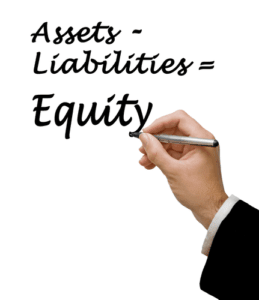SAP MM Master Data

Training keeps all users proficient with VMM, thereby eliminating or limiting errors of commission or omission. To get and sustain optimal results, you really need to apply vendor master data management best practices. This guide discusses the top three best practices for vendor data management that every company should heed. Because of the broad use of the file and its potentially sensitive information, companies need to pay particular attention to the accuracy and security of a vendor master file. A master data management (MDM) tool can speed up this otherwise highly detailed manual process. Maintain an accurate, comprehensive view of supplier performance and make data-driven sourcing decisions with Pattern’s master data management solution.

These critical mistakes are leading to poor procurement data quality

This entails evaluating a vendor’s factors, such as quality assurance practices, industry certifications, financial stability, tax compliance, regulatory standards compliance and reputation. The goal is to ascertain that a supplier meets the required vendor qualifications standards you’ve set for your company. The businesses that get ahead are the ones that treat vendor data as a strategic asset, not just an administrative necessity. Utilise self-service portals where suppliers can enter and update their details directly—reducing manual errors and keeping records current. AI-powered data validation can flag inconsistencies before they become a problem.
Hyper-Personalized Customer Experiences Need Multidomain MDM

With centralised, clean vendor data, your business ensures that every department is on the same page. Procurement, finance, and compliance teams all have access to the same accurate, up-to-date vendor details. This consistency eliminates confusion, prevents errors, and ensures everyone is working with the right information at the right time—saving time and reducing costly mistakes. Vendor master data is the single source of truth for all the key details about your suppliers.

A Golden Record of ”Truth”
This approach streamlines operations and maintains a clean, reliable vendor database, improving overall data quality. Well-maintained, up-to-date and accurate vendor master data can significantly improve a company’s operating margins. With the right data, companies can make smarter decisions by evaluating the performance of their supply chain partners. This allows organizations to maximize the cost-effectiveness and efficiency of their supply chain. As you complete vendor data validation and supporting documentation, that clean data should live inside your VMM and integrated with other company systems, such as enterprise resource planning (ERP) systems. This is critical to vendor data management because it affects overall business operational efficiency.
The cornerstone of this process is the vendor master file, a comprehensive database containing essential vendor information. In this article, we’ll talk about vendor master file best practices to provide you with practical strategies https://acrconstruction911.com/estimating-cfo-a-financial-accounting-calculator/ to enhance your supplier management processes, reduce operational risks, and achieve a competitive edge in your market. Identifying duplicate data is essential for maintaining an efficient vendor master data system. Redundancies can lead to inflated processing costs and confusion in procurement operations.
Solutions by Process
It can be easily overlooked, https://www.bookstime.com/articles/what-is-multi-entity-acounting but accurately and systematically recording vendor addresses in your master vendor file establishes order in your VMM. Since you’ll work with many suppliers in your business lifetime in different locations, establishing a unique style of capturing vendor addresses in your VMM will foster uniformity across the system. Use an MDM system or a dedicated vendor management platform to create a single source of truth for all supplier data. Vendor management data holds all key information about your supplier’s procurement history, contracts, inventory, and supply categories. The best part is that you can easily manage it through an ERP or an accounts payable software. Check them through reviews and testimonials before adding them to your master vendor sheet.
SMDM enhances supplier relationships by providing a centralized, accurate view of all supplier data, which facilitates better communication and collaboration. It helps businesses track performance, identify areas for improvement, and maintain transparency. This streamlined data management creates trust, leading to stronger, long-term partnerships with suppliers. Maintain the effectiveness of your system by continuously monitoring usage, performance, and user feedback.
- The same is true for a Supplier Master Data Management or Supplier Information Management platform.
- To start assessing supplier compliance and risk, for example, once you have started a business relationship, is counter-productive.
- Technologies such as Secure Socket Layer (SSL) for data transmission and Advanced Encryption Standard (AES) for stored data mitigate risks of breaches.
- Yes, reputable cloud-based SMDM solutions use advanced encryption and security protocols, ensuring safe, compliant data management.
Enforcing formatting within software systems that feed to the vendor file can help maintain these files, but consistent communication to the team and data transformation tools will also assist you in keeping these vendor master data management files clean. Vendor Master Data contains basic information about a vendor that conducts business with the Army. GFEBS defines a vendor as any person or organization that provides goods or services. Supplier Master Data Management (SMDM) is crucial for maintaining supplier and vendor data quality over the long term and for avoiding the issues caused by bad data.


